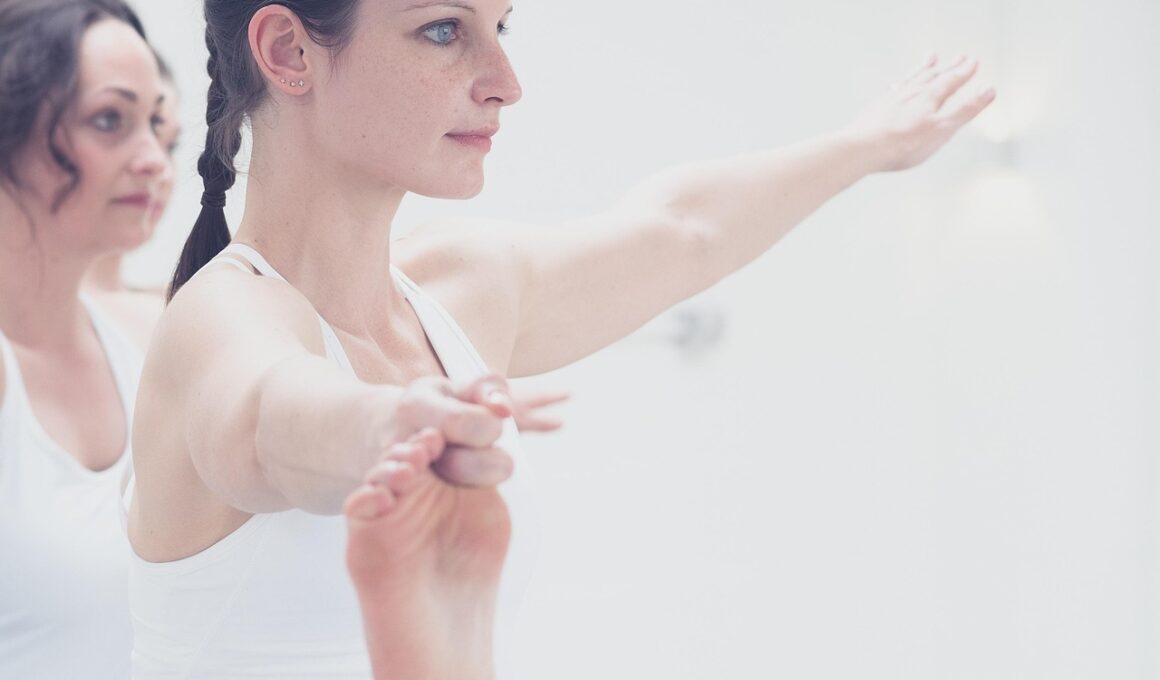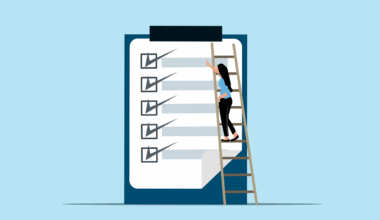Daily Flexibility Habits for Long-Term Functional Fitness Success
Incorporating flexibility exercises into your daily routine is vital for long-term functional fitness. Flexibility is an often overlooked component of fitness that helps enhance mobility, prevents injury, and promotes recovery. Regular flexibility work increases the range of motion in your joints, allowing for more effective movement patterns during workouts and daily tasks. It is important to establish a consistent routine that integrates these exercises so they become a normal part of your lifestyle. You can start by dedicating just a few minutes each day focusing on key areas like the hips, shoulders, and lower back. Consistency is crucial; it is better to perform short sessions regularly than infrequent, extensive classes. Simple stretching at home or yoga sessions can significantly improve flexibility. Additionally, consider taking part in classes that emphasize flexibility, allowing you to learn various techniques and stretches in a structured environment. As you create these daily habits, remember to listen to your body and adjust your routines according to your personal needs and progress. Over time, you may notice increased ease in your daily activities and improvements in your overall fitness performance.
One of the essential habits for improving flexibility involves dedicated stretching routines. Establishing a stretching regimen can enhance your overall physical performance beyond just flexibility. You’ll discover numerous benefits, including improved circulation, quicker muscle recovery, and decreased stiffness. Incorporate both static and dynamic stretches into your daily exercises for comprehensive results. Static stretches involve holding a muscle in a stretched position, while dynamic stretches actively support movement through the muscle’s range of motion. To promote flexibility effectively, you might consider trying different stretching techniques, such as PNF (Proprioceptive Neuromuscular Facilitation) which involves alternating between contraction and relaxation. This method helps increase the effectiveness of stretching routines while teaching your body to relax and yield to greater flexibility. It is essential to remember to breathe deeply while stretching, as this will assist in reducing tension over time. Setting specific goals for yourself, whether they focus on particular muscle groups or overall range of motion, can facilitate integrity and results over time. Flexibility routines should be paired with strength training and cardiovascular activities for a balanced workout regimen, enhancing your body’s overall performance and health.
Incorporating Mobility Drills
Mobility drills are an important aspect of achieving flexibility and overall functional fitness. They help to improve coordination and balance while preparing your body for various movements. Adding mobility exercises to your warm-up routine is an effective way to enhance flexibility. Some recommended mobility exercises include hip circles, arm swings, and spinal rotations, which specifically target areas vulnerable to tightness. These movements will not only improve flexibility but also contribute to injury prevention by increasing the stability of your joints. You can also enjoy dynamic warm-ups before intensive workouts, such as walking lunges or high knees. Ensuring that your entire body is mobilized helps to maintain a properly functioning musculoskeletal system. It is essential to begin your mobility drills slowly, gradually increasing the speed and intensity over time. These warm-up routines are great for preparing yourself mentally and physically for your workouts. Just as flexibility exercises serve to improve your overall fitness levels, mobility drills also play a critical role in optimizing your athletic performance and keeping your muscles functioning properly during all physical activities.
Progress tracking is essential for measuring your success when establishing daily flexibility habits. Keeping a record of your flexibility measurements can provide insight into your progress, while also motivating you to reach your goals. Consider using a journal or an app specifically designed for tracking workouts and flexibility progress. Make note of your specific range of motion before you begin incorporating exercises, and subsequently log any improvements you observe over time. This method serves to keep you accountable, encouraging you to remain consistent in your efforts. Additionally, consider taking photographs or videos of your flexibility progress to visually see how far you’ve come. Engaging friends or family in your flexibility journey can also serve as motivation; you can challenge each other or participate in activities together to keep your routines fresh. Furthermore, reassessing your progress regularly will allow you to adjust your flexibility goals based on what your body can achieve. This approach can foster a sense of accomplishment while promoting ongoing improvements in your flexibility as well as overall fitness levels. Regular reassessment helps you to stay focused on developing successful daily flexibility habits, achieving your long-term objectives effectively.
The Importance of Rest and Recovery
Rest and recovery are often undervalued aspects of developing flexibility. Allowing your body adequate recovery time will help prevent overuse injuries, ensuring that your muscles are not strained or fatigued during flexibility exercises. Incorporating rest days into your weekly routine is crucial, enabling your body the necessary time to heal and adapt. On these recovery days, you may explore gentle stretching or restorative activities like yoga or foam rolling. Foam rolling can help break up muscle knots, further aiding in muscle recovery. It is recommended to listen to your body and distinguish between discomfort and pain; do not push yourself too far during flexibility workouts. When proper recovery techniques are implemented, you’ll likely experience better overall performance in your flexibility exercises. Staying hydrated and following a nutritious diet will also play a significant role in sustaining recovery. Prioritize sleep, as adequate rest significantly contributes to hydration levels, muscle repair, and overall health. Through effective rest and recovery strategies, you can ensure long-term success with flexibility training, improving your functional fitness outcomes consistently.
Engaging in group classes is an excellent way to enhance your flexibility habits effectively. Group classes provide a supportive environment and collective motivation to push each other toward achieving personal goals. Look for local yoga, Pilates, or dance classes that focus on flexibility. Being part of a group can lead to increased accountability and adherence to your flexibility routine. Additionally, trained instructors can offer valuable guidance, ensuring that you perform exercises and stretches correctly, which significantly decreases injury risk. Sharing experiences with peers will foster a sense of community and inspire you to remain committed to your goals. Another advantage of participating in group classes is the variety they offer; you will explore different styles of flexibility training, which can prevent boredom and keep your workouts fresh. Online classes or community virtual workshops are also great options for those looking for convenience and flexibility in their routines. By collaborating with others, you can gain insights and tips that can lead to better results. Embracing group flexibility classes can create enjoyable social experiences, enriching your journey toward improved functional fitness and overall well-being.
Staying Committed for Flexibility Success
Staying committed to your daily flexibility habits is essential for ensuring long-term success in your functional fitness journey. Setting specific and measurable flexibility goals will assist you in staying focused and on track. Aim for realistic objectives, gradually increasing the difficulty as your flexibility improves. Consistency will be key, and making flexibility exercises a non-negotiable part of your daily routine will pay off over time. Finding enjoyable activities that incorporate stretching and mobility can also keep your motivation high. In addition, creating a flexible schedule allows you to accommodate fluctuating commitments while still maintaining your routine. Utilize reminders or schedule ‘stretch breaks’ throughout your day, which will serve as gentle nudges to practice your flexibility exercises. Quick, effective stretching sessions can fit seamlessly into even the busiest schedules, ensuring continued progress. It’s important to celebrate milestones, no matter how small, as they can create a sense of accomplishment and spur you on to achieve bigger goals. Remember that flexibility is a journey, and maintaining your commitment will yield lasting results in your functional fitness practices and overall quality of life.


